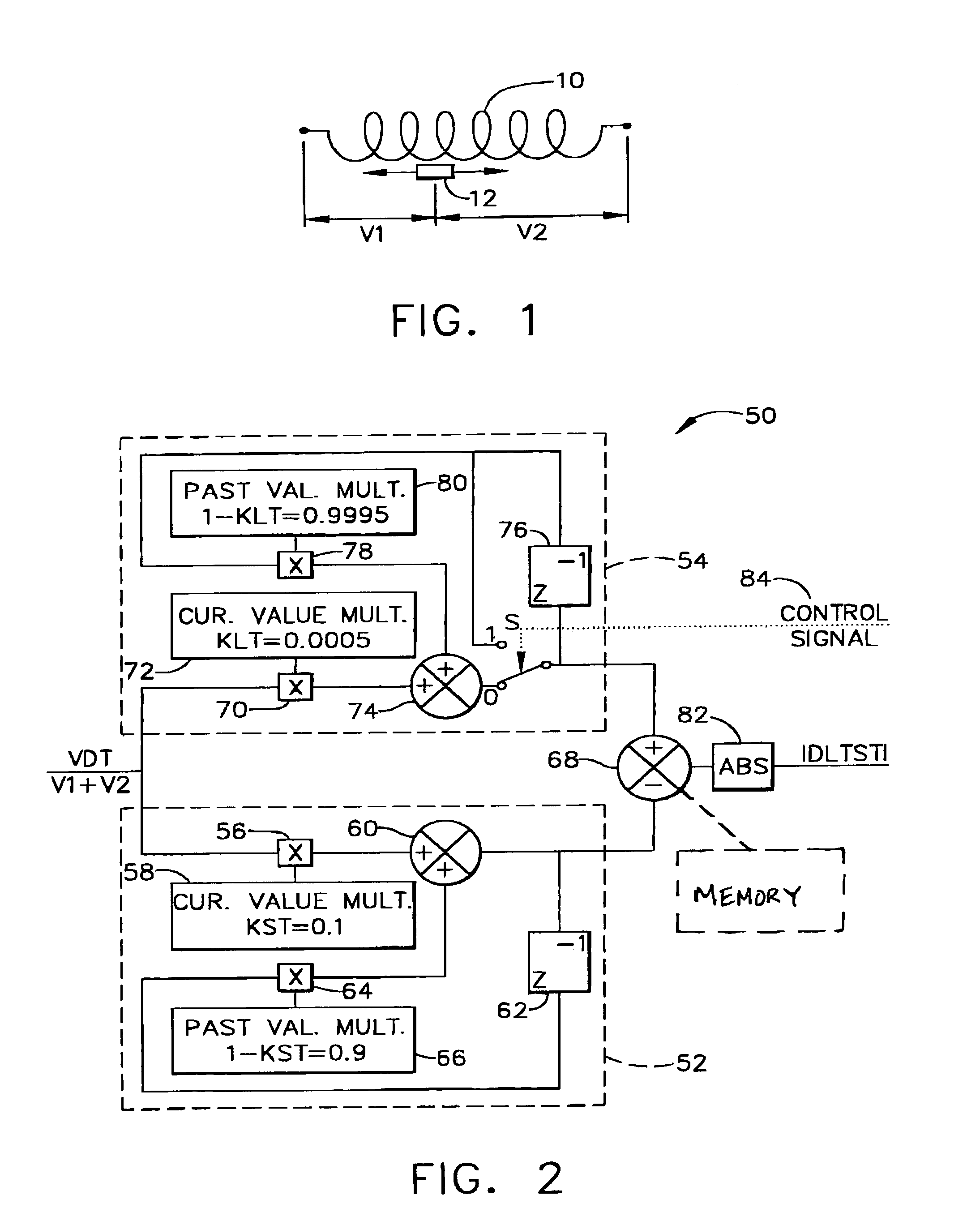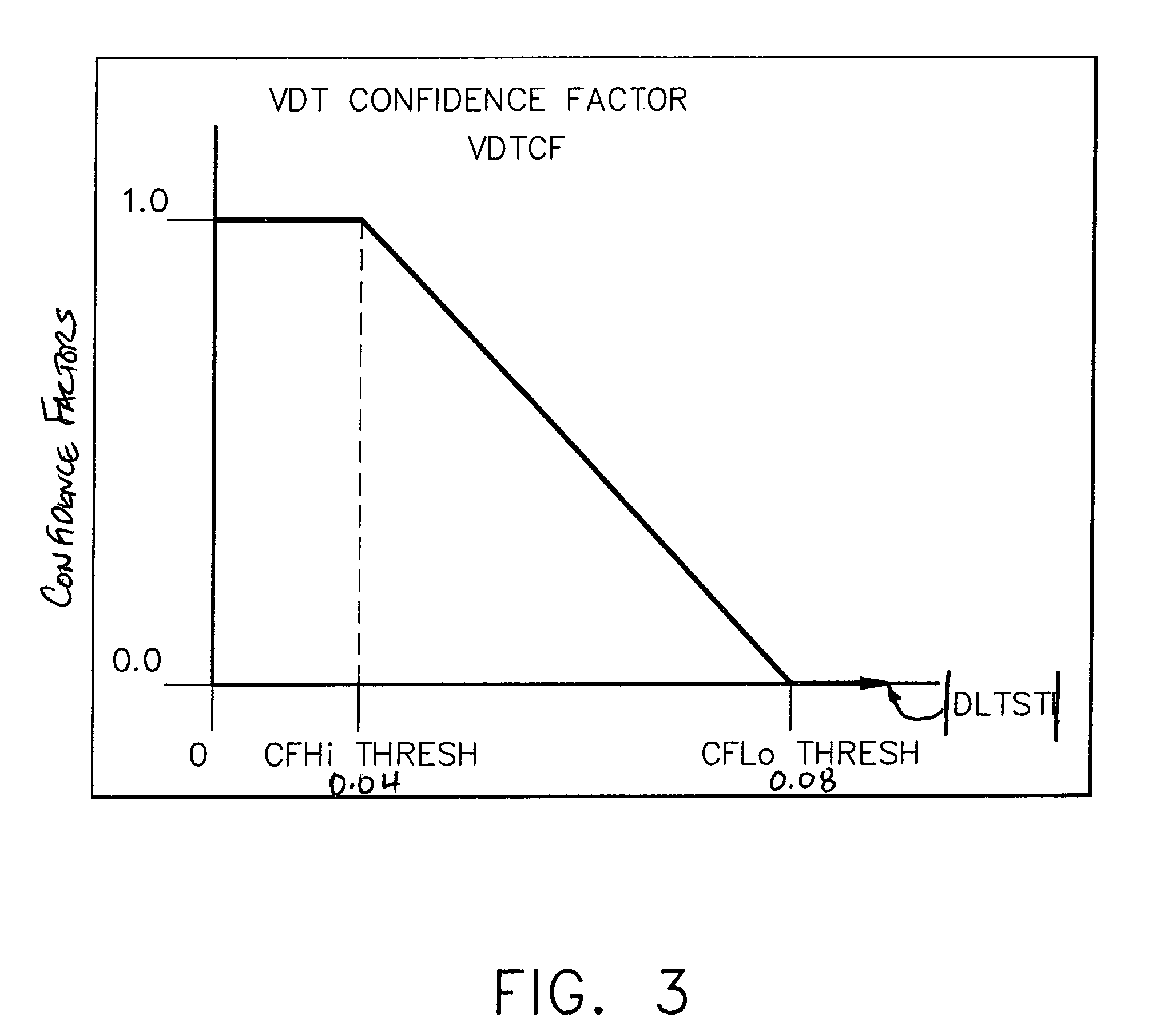Detection of faults in linear and rotary voltage transducers
a technology of rotary voltage transducer and fault detection, which is applied in the direction of transmission system, testing circuit, instruments, etc., can solve the problem that the shift in the sensed position value cannot be detected
- Summary
- Abstract
- Description
- Claims
- Application Information
AI Technical Summary
Problems solved by technology
Method used
Image
Examples
Embodiment Construction
[0009]Generally, as shown in FIG. 1, an LVDT includes a secondary winding 10, and a movable core 12 within the LVDT that affects the output voltages V1 and V2. The sum of the voltages V1 and V2, however, remains constant provided there are no faults in windings 10. A secondary winding of an RVDT is configured identical to secondary winding 10 shown in FIG. 1.
[0010]In accordance with one embodiment of the present invention, a sum of secondary voltages V1 and V2 is obtained by adding the secondary voltages together, i.e., V1+V2. Again, this sum of secondary voltages theoretically should be constant for all LVDT / RVDT positions, since the total length of the secondary transformer is constant. An electrical fault in the primary or secondary windings will generate a corresponding change in the sum of secondary voltages. By comparing this shifted value to a reference value which is representative of a no-fault condition, an error value is created which indicates the magnitude of the shift ...
PUM
 Login to view more
Login to view more Abstract
Description
Claims
Application Information
 Login to view more
Login to view more - R&D Engineer
- R&D Manager
- IP Professional
- Industry Leading Data Capabilities
- Powerful AI technology
- Patent DNA Extraction
Browse by: Latest US Patents, China's latest patents, Technical Efficacy Thesaurus, Application Domain, Technology Topic.
© 2024 PatSnap. All rights reserved.Legal|Privacy policy|Modern Slavery Act Transparency Statement|Sitemap



